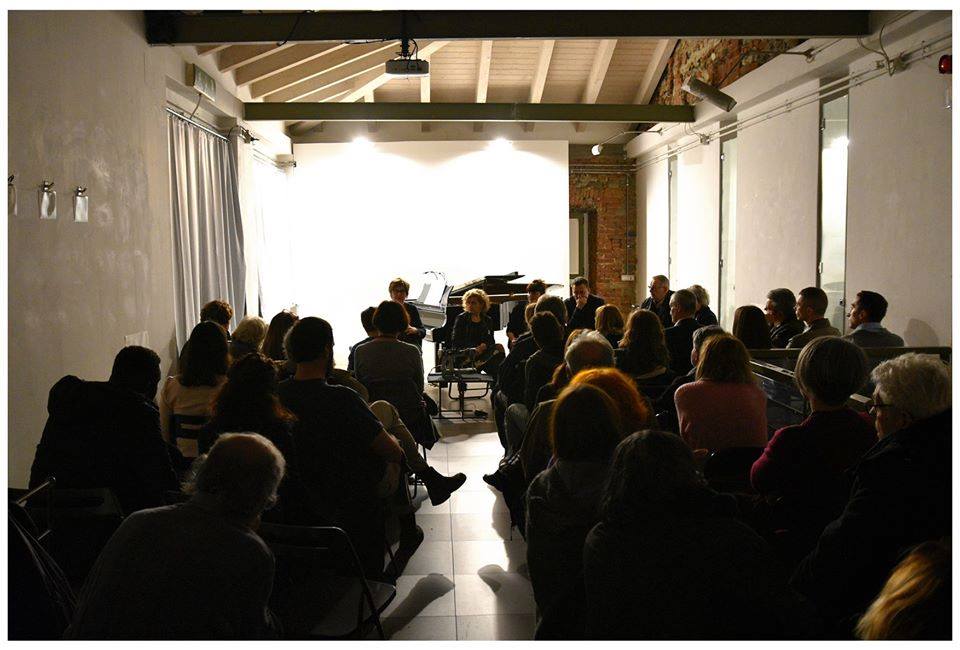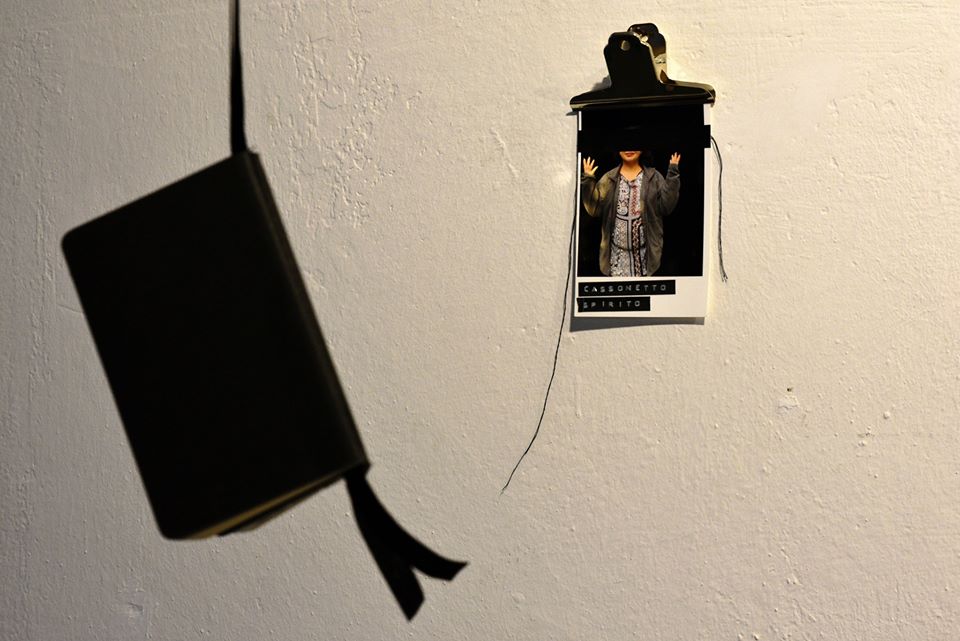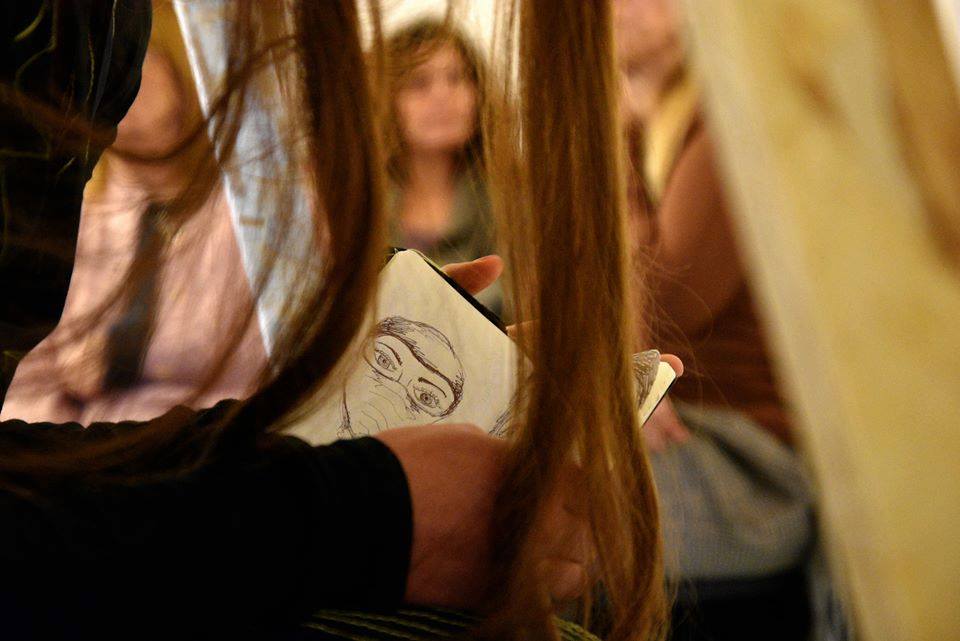Il progetto Lalàgeatelier - Dispositivi Vestimentari nasce ad Oglianico nel 2017.
Fondato dall'artista Sara Conforti all'interno della comunità terapeutica Fragole Celesti - Doppia diagnosi femminile per il trattamento di abusi, violenze e maltrattamenti di Fermata d'Autobus Onlus. Iniziativa promossa da Tessile e Salute. Formazione professionale e produzione in upcycling che intrecceranno pratica artistica e moda circolare.
Lalàgeatelier - Dispositivi vestimentari
Art and participation meet care, enterprise and territory for a slow fashion climate and gender friendly that sews up the abuse of people and planet.
2017 | 2021
Edited by:
Sara Conforti and hòferlab ass. cult.
Lalàgeatelier - Dispositivi vestimentari participates in Torino Proxima | 2021. An initiative organised by the Fondazione Compagnia di San Paolo with SocialFare to accompany civic and cultural projects towards the creation of social impact enterprises.
Lalàgeatelier - Dispositivi Vestimentari is the spin-off project of hòferlab ass. cult. founded by the artist Sara Conforti in 2017 in collaboration with Fragole Celesti - Women's dual diagnosis community for the treatment of abuse and maltreatment and Fermata d'Autobus Onlus. and Fermata d'Autobus Onlus. the initiative is sponsored by Tessile e Salute, an association set up to protect Made in Italy products that deals with eco-toxicology in the textile and fashion sectors, combining the skills of the public system with those of the textile, leather and chemical production chains. An inclusive and widespread project that combines art and fashion - education and production - care and territory - corporate social responsibility and circular economy for the social and professional relocation of women in a state of fragility through a local value chain.
Networking in the area and for the area to generate important ethical, cultural, employment and economic benefits thanks to the virtuous synergies between the business and cultural worlds that have taken part - over the years - in the good practices of the initiative. A project that intertwines artistic and pedagogical practice through the creation of widespread textile works generated by the involvement of the users of the facilities both in training courses to introduce them to the tailoring profession and in participatory artistic research.
Please highlight how the project can be exemplary in this context
A combination of art and didactics that flows into the creation of biographical textile works that aim to heal the wounds of marginalisation by becoming symbols of an ongoing cultural evolution and the type of background that generates them, encouraging strategic communication on the scourge of abuse, violence and marginality and its possible overcoming.
Verbal and figurative traces emerge for the future to be brought together in special tailoring training sessions that allow the fragments of the creative experience to become significant pieces of the textile works created: the vestimentary devices precisely, cut sewn and silkscreened, embroidered and embellished by the signs of the choral artistic experience to disseminate another culture that invites to look at the world with a female view in rebirth, to innovate the quality of relationships and transmit the value of culture and art in the social inclusion of women in progressive exit from violence.
A project in synergy with:
Regione Piemonte; Compagnia di San Paolo; Assessorato Pari opportunità Regione Piemonte Ass. Fermata d'Autobus Onlus; Fragole Celesti Comunità doppia diagnosi femminile per la cura di abusi, maltrattamenti e violenza; Dipartimento Educazione Castello di Rivoli Museo d'Arte Contemporanea; Moleskine Foundation; Fondazione per il Tessile e il Museo del Tessile - Chieri Ass. Tessile e Salute - Biella; Galleria d'arte Gliacrobati - Torino; Refugees Welcome; Produzioni dal Basso crowdfunding; Fortunato D'Amico - Curator - Lecturer Politecnico di Milano; Ismel | Polo del 900 - Torino ; Monica Cerutti - Ambassador of Telefono Rosa Piemonte; Companies: Lanificio Subalpino srl - Cerreto Castello (Bi ); Lanificio Tg di Fabio Spa - Vigliano Biellese (Bi )Lanificio Guabello | Gruppo Marzotto - Mongrando (Bi ); Lanificio Botto Giuseppe & Figli Spa - Valdilana (Bi ); Sinterama Spa - Sandigliano ( Bi )
Please highlight how the project can be exemplary in this context
The cultural world and the artistic and creative sector are precious tools for supporting and consolidating possibilities for gender redemption and for encouraging a valuable multidisciplinary commitment aimed at generating devices for women in situations of social marginality to regenerate self-esteem, economic independence and freedom.
The role of art as a critical anticipatory and amplifying pen - which stimulates change - is undoubtedly central in this direction because it can implement the valuable aid relationship carried out by bodies and structures normally devoted to the care and support of women in conflict situations and fragile contexts.
Please highlight how the project can be exemplary in this context
A circuit for the regeneration of identity through the creation of widespread textile works that sew up marginalisation, becoming symbols of a cultural evolution underway and the type of background that generates them, and that favours strategic communication on the scourge of abuse, violence and marginality and its possible overcoming.
A shared making not only in the re-edition of the self, but also of the material that from a discarded object not only finds new life, but does so by acquiring a greater value than the original object or material.
The propaedeutic artistic research paths carried out with the users favour autobiography and the positive reminiscence that leaves the traumatic event in the past, in order not to intercept the prurient stereotypes and the "toxic" narration on gender violence used by the press.
Please highlight how this approach can be exemplary
A project to combine respect for the individual and the environment in accordance with the principles of the circular economy, thanks to the recovery of valuable end-of-piece fabrics used in a form of participatory production: an in-localised supply chain for a new value chain linking the work of the users of the Strawberry Celestial community with that of the guests of other organisations and structures responsible for the protection and care of fragile women at regional level.
Fast fashion and global disposable fashion supply chains Systemic violation on people and environment
Social and professional reintegration of women victims of violence and in a fragile state Violence against women is a human rights violation
To further disseminate the appreciation and development of design, creative, critical and manual skills beyond the confines of the therapeutic facility and to link it to the territory.
To create new paths and collaborations capable of disseminating experiences linked to art and cultural welfare that flow into a concrete and qualified profession and into a re-edition of the self through artistic practice and the acquisition of a professionalism.
To form a network of women involved who are more aware of their personal resources and able to choose their future in a participatory manner.
In order to involve in the project also the centres responsible for supporting marginalised women, anti-violence centres and other realities dealing with social innovation and territorial welfare in the context of Turin.
Please also explain the benefits that derived from their involvement.
Effects on the beneficiaries
Greater inclusion and insertion in the city context; knowledge and awareness of oneself and one's own value and consequent increase in self-esteem; increase in technical, design and manual skills; greater ability to work in a team; better time management and work organisation; greater knowledge of the environmental impact of the fashion sector and development of a more sustainable critical consumption; greater opportunities for reintegration into work and economic independence; activation of friend and family networks
Impacts on the territory
Development of new relational patterns; dissemination of circular economy and circular thinking; greater inclusiveness of public spaces; upgrading of the territorial context
The project aims at involving the territory in co-planning practices for the valorisation and development of design, creative, critical and manual skills of women in a state of fragility as a reactivation of the self and of the social capital of the territory.
Summary of activities
Inclusive art courses and tailoring training activities - sustainable fashion
Designing and tailoring fashion collections (capsule collection Climate and gender friendly)
Activities to raise awareness of environmental issues, gender equality, circular economy, ethical fashion for citizenship
Services for citizens - awareness raising
Exhibitions and cultural events - Inclusion
The project is a participatory workshop for urban regeneration. Active citizenship, artistic research, design and circular fashion contribute to the germination of a choral work for and with the territory. Culture and enterprise, allied to gender equality and environmental sustainability, collaborate in the development of new models and innovative local services, aimed at systemic change with a high social impact.
CREATION OF A NETWORK FOR WORK REINTEGRATION
At the end of the pathways, paid training courses are planned for the beneficiaries.
The mediation of textile partner companies is foreseen for issues such as recruitment and search for contributions. The participation of job centres and temporary agencies is envisaged for a network collaboration.
LALÀGEATELIER + PARTICIPATORY ARTISTIC RESEARCH
Artistic research is absent in the work of the competitors analysed. There is stylistic research work that takes the form of handicraft products, often of high quality, but which does not derive from the application of the art factor, understood as a process linked to social and anthropological research aimed at a participatory transformation of the social fabric.
Please provide clear documentation, communication of methodology and principles in this context.
LALÀGEATELIER + ATTENTION TO THE ENVIRONMENT
Supply chain traceability + supply chain label = Unlike those used in the production of the competitors analysed, the fabrics used in the Lalàgeatelier production cycle come from companies certified by Tessile e Salute, which works in collaboration with the Istituto Superiore di Sanità.
The end pieces used are strictly controlled and comply with the strict eco-toxicological parameters and EU regulations regarding the chemicals used.
Circular economy: Lalàgeatelier operates through the total re-use of materials in all phases of the production cycle, unlike the competitors analysed who approach or even disregard upcycling.
Attention to the environment is a widely used factor in the textile/clothing sector. A key statement that all too often, however, does not really correspond to the companies' supply chain.
For Fast Fashion - which we consider to be the main competitor of any garment company in the market - we have to make a separate argument from the factors in the survey.
Clothing multinationals encourage a façade of environmentalism through greenwashing, which is evident in the analysis of production chains and the materials used in production. The social aspect of the products is linked to pure marketing strategy and does not really correspond to the wages and living conditions of the workers in the global supply chains. This creates disorientation and media manipulation that continues to appeal to less informed consumers. Fast fashion manufacturing is over-abundant and of very poor quality, but accompanied by a winning communication on socio-environmental issues that entices consumers to compulsively renew their wardrobes with almost 1 re-assortment per week (Inditex group, H&M etc.).
Toxicological impact
There is a total lack of traceability in the supply chain to inform consumers about the production phases and the origin of fabrics and the type of chemical treatments used.






@hòferlab ass. cult., 2022
Content licensed to the European Union.